Navigating the complexities of catastrophe risk management requires not just innovative tools, but also a deep understanding of the market’s evolving needs. To explore how Property Guardian is shaping the future of risk assessment and mitigation, we spoke with Gary Raphael, Head of Business Development.
With over three decades of hands-on experience in risk mitigation, Gary brings a unique perspective to managing catastrophic risks for high-net-worth families and property owners. With Property Guardian, a Green Shield company, Gary is driving forward a bold strategy to tackle the evolving challenges of the insurance market. In this Q&A, he shares his insights into Property Guardian’s innovative approach to risk assessment, explains how the industry can better prepare for natural disasters, and highlights the company’s mission to empower underwriters, agents, and property owners with actionable data.
Q: Why did you join Green Shield’s Property Guardian?
A: We’re clearly in an environment where the insurance industry is increasingly perplexed by the challenge of natural disasters and climate change. What Green Shield aspires to do is build new solutions to meet that need. Where other people see obstacles that are tough to break through, we are really working very diligently to figure out ways to push them aside. I love the energy that comes with being surgically focused on a mission that’s disruptive.
Q: How is catastrophic risk evolving and becoming more challenging for the insurance industry?
A: There’s no question that we live in a world of heavier rain, more severe drought, rising water levels, colder temperatures, hotter temperatures – these all add up to a level of activity that is not only more frequent, but is more violent. You don’t need to be an actuary to understand that.
Then what we’ve seen economically in terms of the dynamic nature of material costs, and labor costs and construction costs to replace damaged or lost structures only elevates the problem. And that issue becomes even more problematic when you’re dealing with a large-scale event.
Catastrophes, as we talk about in the insurance space, have all the natural dynamics but then there’s the collateral influence of inflation, and cost creep, and it makes it a really complicated issue for the industry. I think the industry feels at times like it’s constrained in its ability to accurately charge for all of those elements. It becomes a bit of a vicious cycle.
Q: What is the biggest misconception among insureds about catastrophic risk?
A: Property owners are quick to dismiss the growing body of evidence that it’s not a matter of if but when you and/or your property will be directly affected by some kind of a catastrophe event. Property owners need to understand the realities of their risks and they also need to be actively participating in defending what they own and care about. If I, as a risk management technician, care more about protecting their property, there’s some kind of imbalance to the equation.
Most people don’t believe or don’t think that there are techniques they can use to actually help them survive and to mitigate their exposure, and there’s nothing further from the truth.
Q: What are some of the major pain points for the industry when it comes to insuring and preparing for catastrophic risk?
A: A historical pain point has been this seemingly endless reliance on what I would describe as antiquated techniques for evaluating exposure to a natural disaster at the property level. My experience too often has been that underwriters are viewing entire geographies as being off limits to their underwriting appetite. Or a property is deemed uninsurable based exclusively on a risk score that doesn’t shed any light on how it was formulated. It’s a number, and as a consequence of that number the property has been deemed uninsurable – the carrier has made the decision from an underwriting standpoint to move on.
In essence, the industry is using scores and models more broadly to really avoid risk and not manage it. And I think that’s where Property Guardian is trying to change the paradigm. There’s so much granular, impactful data to be able to tap into to draw more insightful conclusions from.
Q: What is Property Guardian’s approach to the current challenges?
GR: We are very assertive about our desire to lead with risk mitigation and risk transparency. We are first and foremost developing the insight tools that modern CAT underwriting requires and we’re bringing those into the broader property casualty marketplace – not just for our own advantage, but for the advantage of the marketplace more broadly.
But at the heart of all of that is the ability to interpret real risk and prescribe preventative measures in an in-depth way that that nobody else can. We believe that insights – a deep level of insights – are essential to better underwriting. And our special sauce is the ability to coalesce around an opinion or a view of risk based on the interpretation of the data that we collect by people who are experts in the space that we’re examining.
Q: How will Property Guardian work with the industry and insureds to better prepare against catastrophic risks?
GR: By aspiring to get down to the property level – that’s the that’s the trick. If we can get those insights, we can then create a prescriptive collaborative approach to properties and promote the likelihood that they will survive whatever they are exposed to.
That practicality lends itself to being taken seriously by the property owner and getting the property owner to proactively engage and prepare. We will shed light not only on what needs to be fixed, but we’ll also take this a step further and offer suggestions on just exactly how to fix them and reduce the risk to everybody’s satisfaction.
Q: What is Property Guardian’s ultimate mission?
GR: We view our mission at Green Shield as equipping underwriters to make fully informed decisions. And to give agents and property owners the ammunition they need to illustrate why they are potentially the exception – why they are better than the risk that’s directly across the street, why there should be a competitive appetite for insurance. If we achieve that, then I think not only are we making a contribution to the industry, but we’re making a contribution that extends far beyond our own balance sheet.

